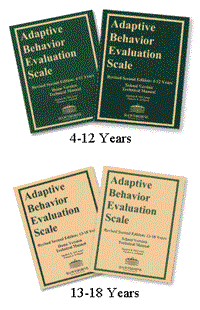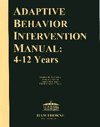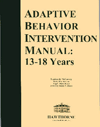
The Adaptive Behavior Evaluation Scale-Revised Second Edition (ABES-R2) provides a measure of adaptive behaviors necessary for success in the educational and residential settings that are not measured by academic skills testing. The ABES-R2 meets the need for an adaptive behavior rating scale which relies on direct behavioral observations by educators and parents/guardians in educational and residential settings. The ABES-R2 is used as a measure of adaptive skills in the identification of intellectually disabled, behaviorally disordered, learning disabled; and visually, hearing, or physically impaired students. The ABES-R2 assesses 10 areas of adaptive skills grouped under the three adaptive behavior domains defined in the 10th AAMR Definition of Mental Retardation (AAMR, 2002): Conceptual, Social, and Practical Skills.
The technical manuals include data on internal consistency, test-retest and inter-rater reliability; item and factor analysis; and content, criterion-related, diagnostic, and construct validity. |
|
Characteristics and Components of the ABES-R2
- The ABES-R2 is based on the definition of adaptive skills adopted by the American Association on Mental Retardation (AAMR, 2002).
- Factor analysis confirmed the three ABES-R2 domains.
- The ABES-R2: 4-12 SV was standardized on 3,288 students ages 4 through 12 years old. The ABES-R2: 13-18 SV was standardized on 1,897 students ages 13 through 18 years old.
- The ABES-R2: 4-12 HV was standardized on 1,998 students ages 4 through 12 years old. The ABES-R2: 13-18 HV was standardized on 1,034 students ages 13 through 18 years old.
- The standardization population included students from 30 states, represented all geographic regions of the United States, and closely approximated the 2000 demographic characteristics of the United States.
- The ABES-R2 provides norms based on age (4-12 and 13-18) for males and females.
- Internal consistency, item and factor analysis, standard errors of measurement, and test-retest reliability are reported.
 
|



